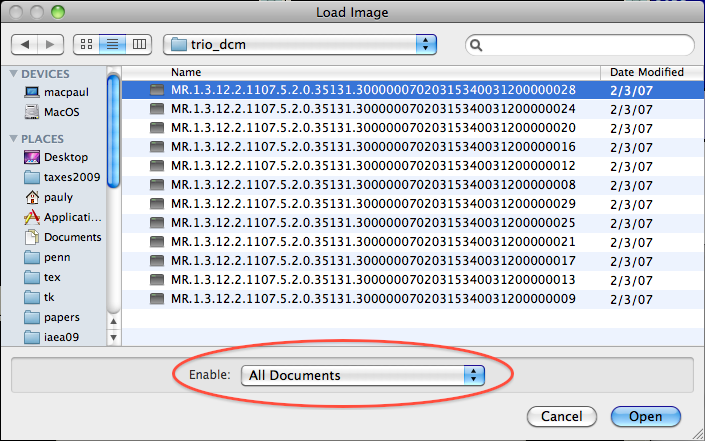Sample Dicom Data Files
Opera Mini Handler 7 Apk Download. All modalities in radiology practice have become digital, and therefore deal with DICOM images. Image files that are compliant with part 10 of the DICOM standard are generally referred to as “DICOM format files” or simply “DICOM files” and are represented as “.dcm.” DICOM differs from other image formats in that it groups information into data sets. A DICOM file consists of a header and image data sets packed into a single file. The information within the header is organized as a constant and standardized series of tags. By extracting data from these tags one can access important information regarding the patient demographics, study parameters, etc. In the interest of patient confidentiality, all information that can be used to identify the patient should be removed before DICOM images are transmitted over a network for educational or other purposes. In addition to the DICOM format, the radiologist routinely encounters images of several file formats such as JPEG, TIFF, GIF, and PNG.
Each format has its own unique advantages and disadvantages, which must be taken into consideration when images are archived, used in teaching files, or submitted for publication. Knowledge about these formats and their attributes, such as image resolution, image compression, and image metadata, helps the radiologist in optimizing the archival, organization, and display of images.
This article aims to increase the awareness among radiologists regarding DICOM and other image file formats encountered in clinical practice. It also suggests several tips and tricks that can be used by the radiologist so that the digital potential of these images can be fully utilized for maximization of workflow in the radiology practice. What is a DICOM Image File?
The DICOM standard is useful for integrating all modern imaging equipments, accessories, networking servers, workstations, printers, and picture archiving and communication systems (PACS) that may have been installed by multiple manufacturers.[] Because of its ease of integration and continuous evolution this communication standard has over the years achieved a nearly universal level of acceptance among vendors of radiological equipment. A DICOM image file is an outcome of the Digital Imaging and Communications in Medicine standard. Specifically, image files that are compliant with part 10 of the DICOM standard are generally referred to as “DICOM format files” or simply “DICOM files” and are represented as “.dcm.”[]. Why cannot DICOM Files be Viewed Directly on a Personal Computer? There are several situations where DICOM files find their way into radiology practice. One common example of this is when information from a radiological study is exported into an offline medium such as a compact disk (CD) for easy transport or archival.




